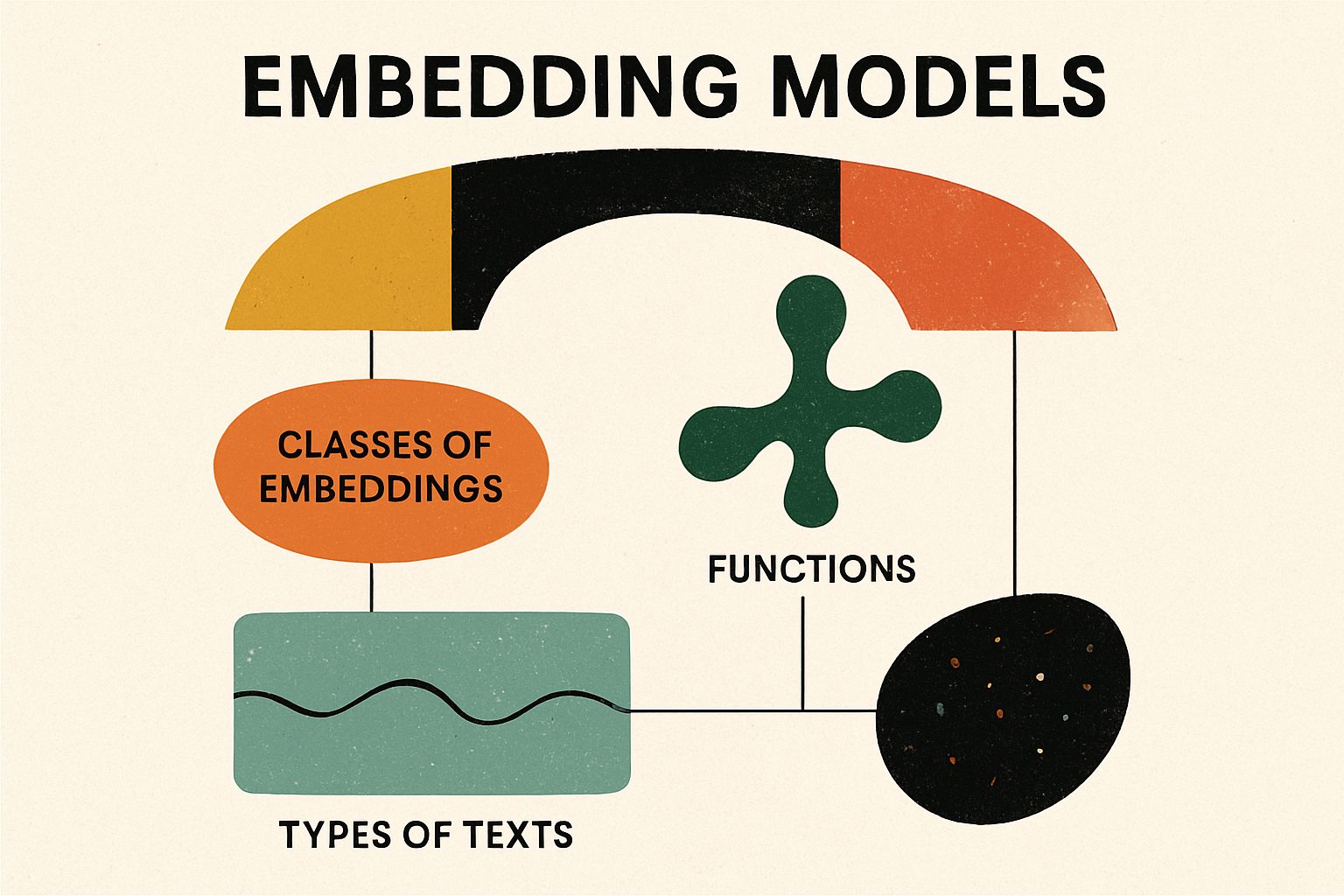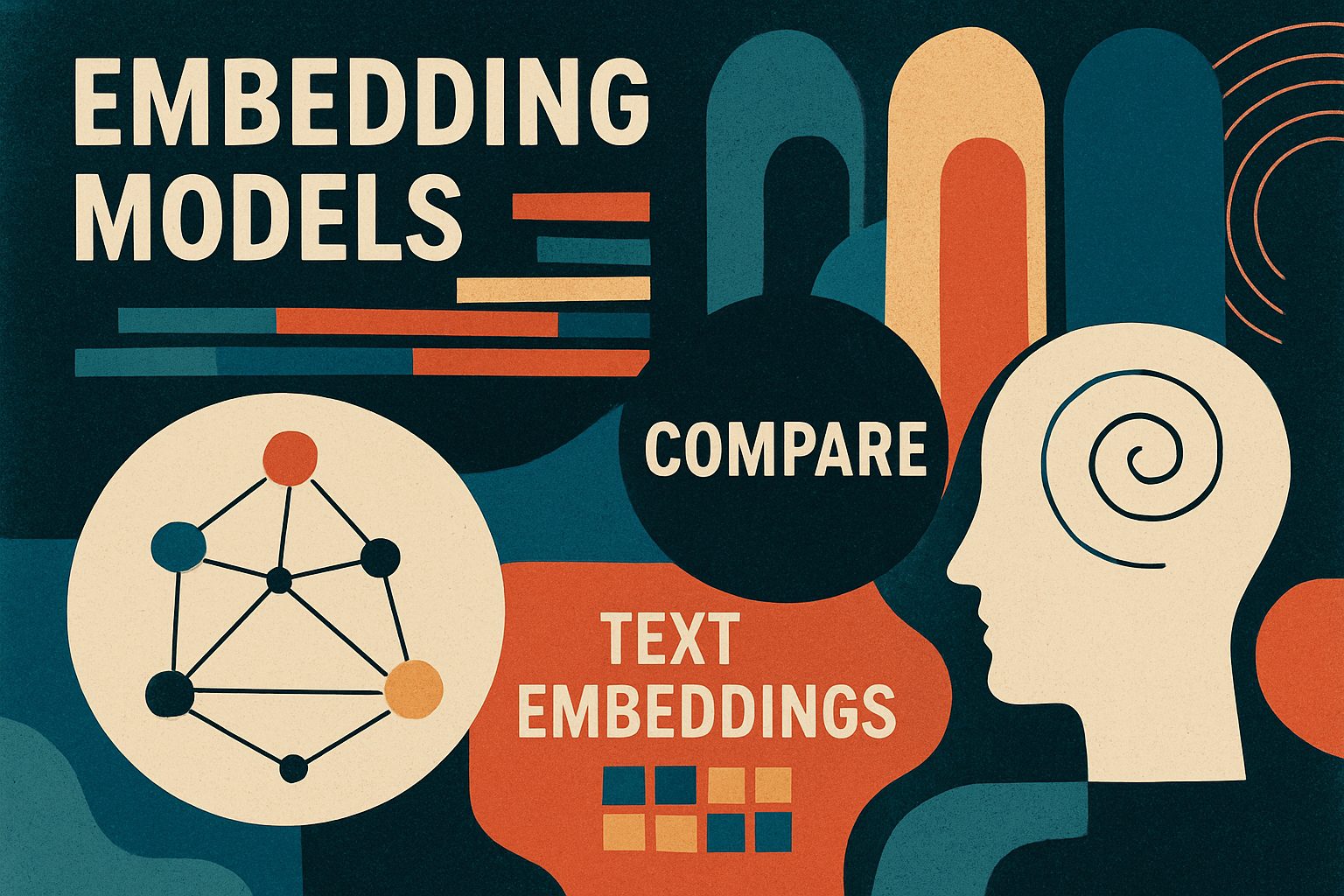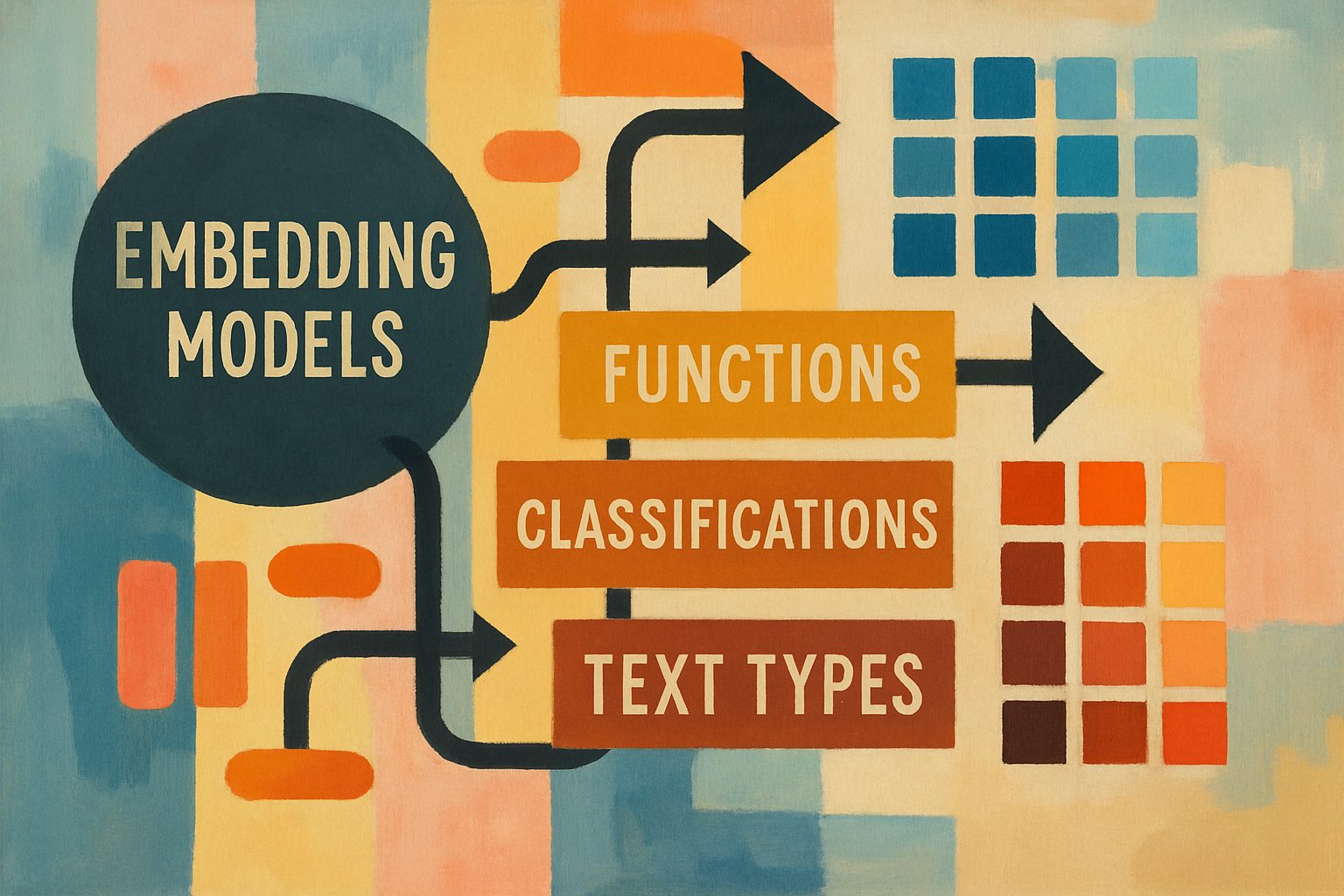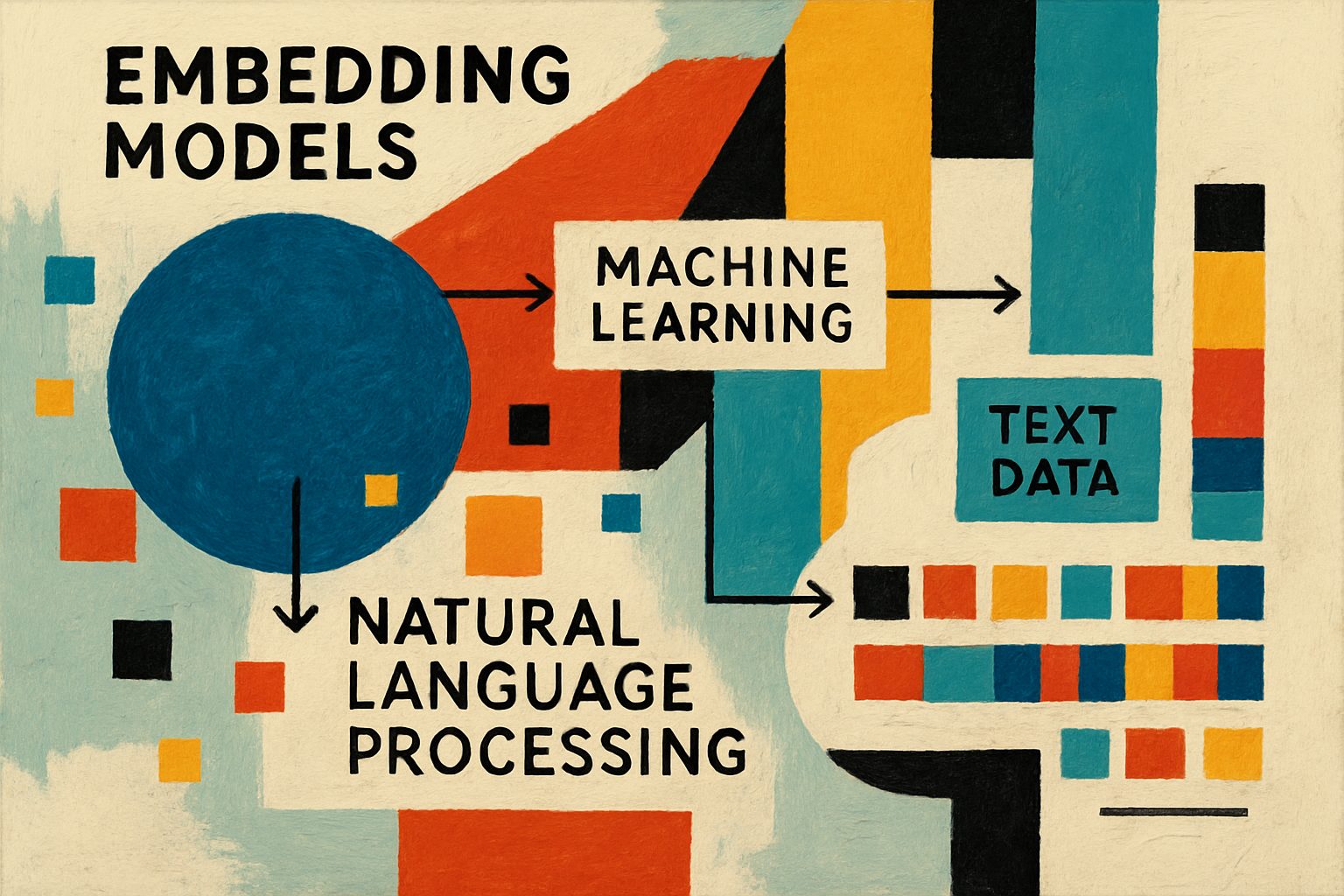
Unlocking the Power of Embeddings: A Deep Dive into Models and Text Suitability
Discover the fascinating world of embedding models in our latest analysis. We break down the various classes of embeddings, their functions, and how to choose the right one for different types of texts, ensuring you harness their full potential.
This comprehensive analysis explores Compare the various embedding models, explaining their functions and the different classes of embeddings that exist. Specifically, identify which embeddings are suitable for different types of texts and illustrate this relationship, providing reasons for these distinctions., based on extensive research and multiple data sources.
Below is a comprehensive research article that compares various embedding models by explaining their functions, differentiating their classes, and identifying which embeddings work best for different types of texts. This article follows a structured reasoning approach, weighing evidence from multiple sources, and uses rich formatting to clarify the analysis.
Thesis:
The modern landscape of embedding models is diverse, with each class—ranging from frequency-based to deep neural methods—offering distinct advantages for representing textual data. By understanding the underlying functions and nuances of these embedding classes, we can better match embedding techniques (e.g., word, sentence, document, multimodal) to specific text types and applications.

1. Overview of Embedding Models
Embeddings transform complex textual data into continuous vector representations that capture semantics, syntax, and contextual nuances. Unlike sparse representations such as one-hot encoding, embeddings place similar items in close proximity in a high-dimensional space (Swimm.io).
Embedding Classes and Their Functions
- Frequency-based Embeddings
- TF-IDF:
Uses word frequency to identify important terms, useful for information retrieval. -
Co-occurrence Matrices:
Capture how often words appear together; effective at revealing underlying semantic relationships but can be computationally intensive. -
Prediction-based (Neural) Embeddings
- Word2Vec:
Utilizes either Skip-gram (predicting context from a given word) or CBOW (predicting a word based on its context).
> Example: “King” – “Man” + “Woman” ≈ “Queen” demonstrates its capacity for semantic arithmetic.
Read more on Word2Vec - FastText:
Extends Word2Vec by incorporating subword information; ideal for morphologically rich languages and handling out-of-vocabulary words. - GloVe:
Integrates global co-occurrence statistics into vector generation, bridging local and global context for
Below is an analytical research piece on adaptive and dynamic techniques that synthesizes information from multiple credible sources and provides a nuanced understanding of adaptive methods.
Thesis & Position
Adaptive and dynamic techniques are critical methodologies that enable systems—whether in software development or machine learning—to continuously adjust to changing requirements and contexts. These methods focus on incremental learning, continuous feedback, and iterative improvement, ensuring that both products and learning systems remain effective and relevant. By systematically embracing change, organizations can mitigate risks and enhance performance in dynamic environments.
Evidence & Factual Foundations
Adaptive Software Development (ASD)
Adaptive Software Development is a methodology that emerged as a response to the rigidity of traditional waterfall methods. It emphasizes:
- Iterative Development: Projects are broken into smaller, manageable cycles, allowing teams to release incremental value.
- Risk Management: Early and continuous identification of risks is integrated into each cycle.
- Decentralized Control: Empowerment of teams to make decisions based on real-time information.
- Customer Focus: Regular engagement with clients ensures that evolving needs are met.
For a detailed exposition of these principles, GeeksforGeeks provides an extensive overview, while Wikipedia outlines the historical evolution and core cycles of “speculate, collaborate, and learn.”
Adaptive Learning in Machine Learning
In the realm of machine learning, adaptive techniques are employed to tailor the learning process according to the performance of the system. Key aspects include:
- Supervised, Unsupervised, and Reinforcement Learning: These learning paradigms allow systems to adjust based on feedback, cluster similar data points, and reward optimal behaviors.
- Neural Networks and Decision Trees: These models exemplify adaptive architectures by adjusting their internal parameters in response to new data.
- Continuous Improvement: Adaptive learning systems improve their predictions by learning from mistakes—a process that reflects the broader principle of iterative refinement.
For an in-depth discussion on adaptive learning, the post on Medium by Mohit Mishra provides examples and applications that span natural language processing, computer vision, and robotics.
Critical Analysis & Comparative Perspectives
Comparison of Adaptive Techniques
Adaptive techniques can be compared both within software development methodologies and learning systems. The following table outlines key differences and similarities:
| Aspect | Adaptive Software Development (ASD) | Adaptive Learning in Machine Learning |
|---|---|---|
| Core Principle | Iterative feedback and collaboration | Continuous model updating using data feedback |
| Cycle Approach | Speculate, collaborate, and learn cycle | Data-driven iterations and parameter adjustments |
| Risk Management | Proactive risk identification and mitigation | Error minimization through back-propagation and reinforcement |
| Customer/Learner Focus | High involvement to tailor product features | Personalization to enhance the learning experience |
| **Primary Techniques |
Vyftec – Embeddings Evaluation
At Vyftec, we leverage cutting-edge AI to analyze and compare various embedding models, uncovering their unique strengths for different text types. Experience Swiss quality in our tailored solutions—let’s elevate your project!
📧 damian@vyftec.com | 💬 WhatsApp


